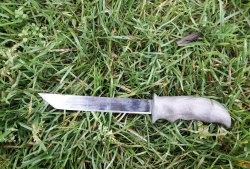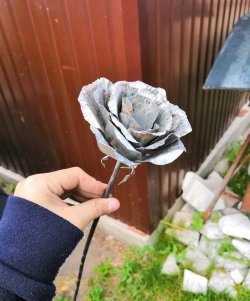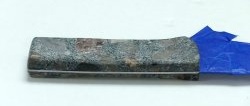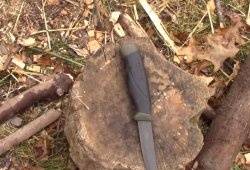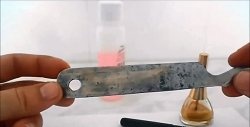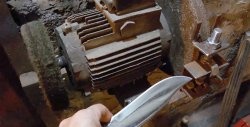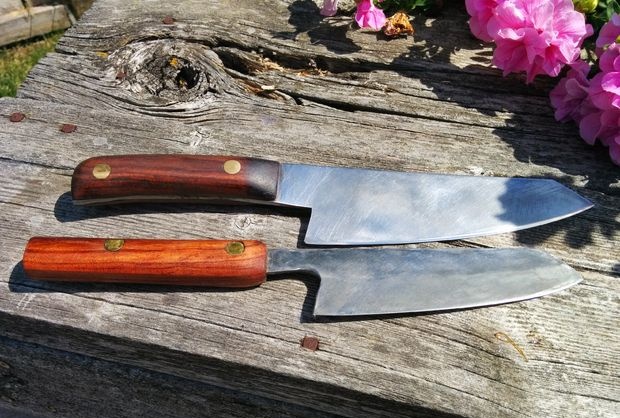
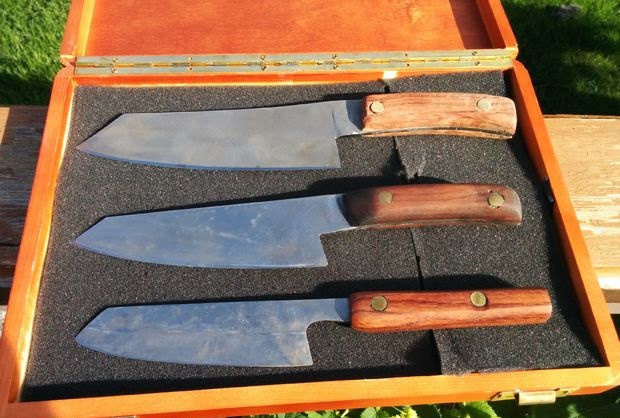
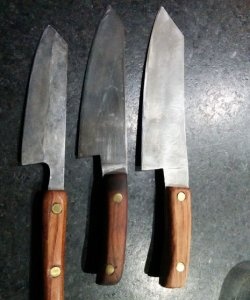
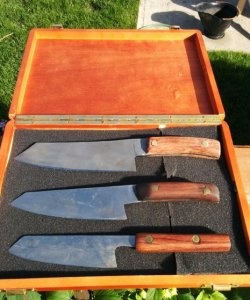
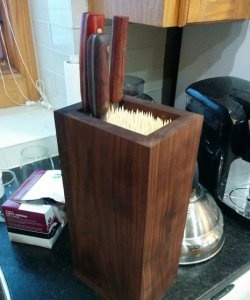
A custom knife is a staple for most professional cooks and chefs. Its cost can vary from $200 to $3000. However, you can make one for yourself for just $10, and the work will be done only with hand tools.
I wouldn't call the knife making process very difficult, but it does require a lot of time and patience, so have your favorite audiobooks ready. Each knife takes about 20 hours to make. There are ways to reduce this time, but then you will have to spend more.
List of steps:
- Selection of materials and/or tools.
- Choosing a knife design.
- Select steel based on your needs.
- Shaping a sheet of steel.
- Heat treatment of metal.
- Knife sharpening.
- Making a wooden handle.
While working on this project you will have to work with quite sharp, hot tools and flammable substances. A common sense approach should keep you out of any trouble, but please be careful.
With that said, let's continue.
Materials and tools
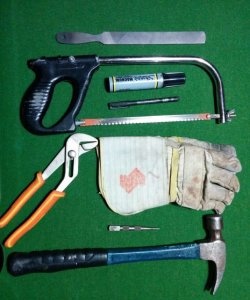
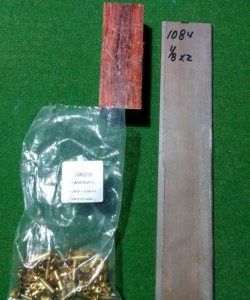


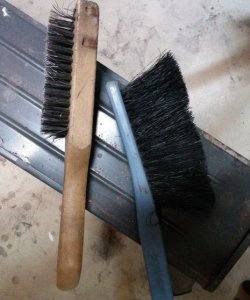
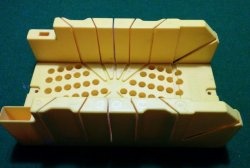


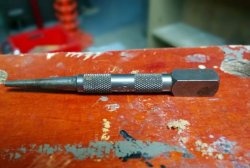
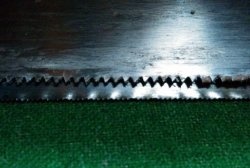
How to Make and Use a Knife Feed Clamp
Here's what you need to make a good quality knife:
Materials:
- Steel (I will dwell on this issue in more detail at the next stage).
- Tree.
- Brass rivets.
- Gypsum.
- Iron sieve.
- Gas-burner.
Tools:
- Metal file (double notched).
- Hacksaw for metal.
- Hand drill and drills for it (you can use an electric one).
- Permanent marker (thin and thick tip).
- Metal scissors.
- Hammer.
- Kerner.
- Long nose pliers.
- Gloves.
- Nozzle (for burning propane).
- Metal or plastic brush.
- Miter box.
- Saw on wood.
- Sandpaper.
- Clear varnish or stain.
It is also useful to have a file clamp.
Knife steel

The choice of steel you choose will greatly affect the end result. This is the most important part of the knife.
Steel is a combination of two substances: iron and carbon. The more carbon a steel contains, the harder it is. Hard steel can be used to produce a thinner, sharper cutting edge that will remain that way for a long time. However, this will also lead to a decrease in its strength, since such steel will become more brittle.
Historically, these two elements were combined when a blacksmith heated iron in a forge. The smoke that came from the fire (mostly carbon particles) coated the steel and then combined with it as the iron was shaped. This is how Damascus steel came about - the more layers in the blade, the more times they were folded and forged, so the carbon content was higher. Today, Damascus steel is produced automatically and is similar in quality to high-grade stainless steel. It has a characteristic texture that can be emphasized with acid.
With the advancement of technology over the last few hundred years, you no longer need all the equipment of a blacksmith to make a knife from high carbon steel. Today, suitable metal can be ordered online.
There are two classifications of steel: stainless and rust-resistant.
Stainless steel usually contains at least 13% chromium, which helps keep it from rusting and corrosion. Stainless steel is more difficult to heat process, especially at home. Therefore, if you want to opt for such a metal, then you will most likely have to use third-party services for heat treatment.
The rusting steel blade contains less than 13% chromium. Such metal usually costs less and is easier to heat treat. Knives made from it are as sharp as those made from stainless steel. However, these metals are susceptible to corrosion and rusting to a certain extent, so they should not be kept in damp conditions (no more than 20 minutes).
To make your first knife, I recommend that you use one of two types of steel. Alloyed tool steel (HVG) or structural spring steel (grade 85).
Now that you've finally decided on your steel choice, it's time to decide on the dimensions.
My first knife was 230 x 2.5 x 40 mm from HVG. When making it, I recommend focusing on the thickness and width of the blade mentioned above. You can choose its length at your discretion.
Choosing a knife shape
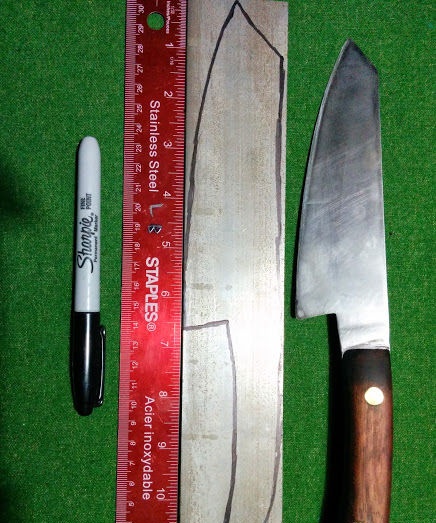
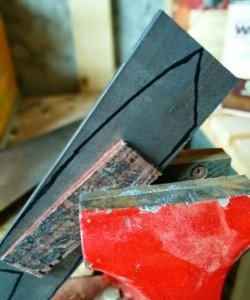
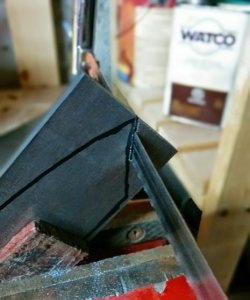

The shape of kitchen knives may vary depending on their purpose. I chose a Western Japanese kitchen knife. You can find a more suitable form for yourself. I recommend cutting it out of cardboard first to test how it will fit in your hand.Then, if necessary, it will be possible to change its size.
Once you have decided on the shape, you can order the appropriate metal. Remember that the larger the knife, the longer it will take you to process it. So I recommend starting with a small size.
Next, transfer the contours of the knife from the cardboard to the metal using a thin marker.
If you use a vice when processing metal, then you will also need a pair of wooden blocks between which you will clamp the workpiece. Then there will be no marks left on it from the vice.
Use a hacksaw to cut out the primary shape. This will take quite a long time. If you hold the hacksaw with both hands (one on the handle, and the other near the tension screw) and evenly distribute the pressure during work, the process will go much faster.
Blade profile formation
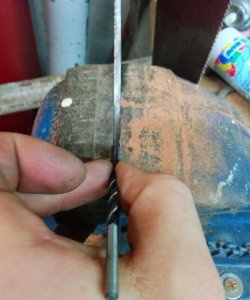
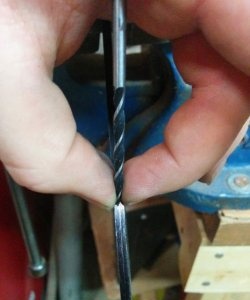

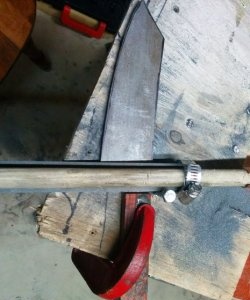
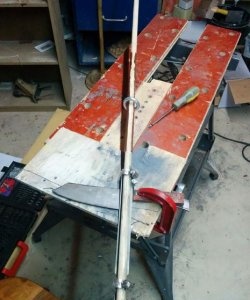
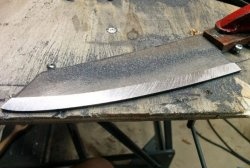


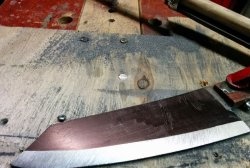

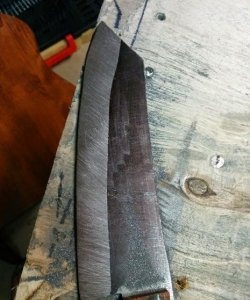
Usually a knife has two triggers, sometimes three. One goes along the entire blade of the knife, and the second makes the cutting edge. There are many types of profiles, each of which has its own advantages and disadvantages. I will focus on the most common ones, and those that can be formed using a file jig.
Wedge profile:
Both sides of the blade rise in an even line to the butt. A very common profile, as it combines sharpness and wear resistance.
Pentagonal blade profile with lead:
This profile contains three descent ribs. The lowest one, which is sharpened. Then there is the middle rib, which extends to the middle of the blade and then there is a descent at a slight angle or a completely straight blade. This profile is not as sharp as a wedge, but it is more resistant to wear and experiences less friction when cutting.
Single-sided sharpening:
Only one side has a wedge-shaped descent. This profile is sharper and more precise because one side remains flat. Quite common in Japanese culture. With such sharpening, the blade wears out faster and for those who are not familiar with this profile, working with a knife may seem unusual. This type of blade is the fastest to make and is easiest to sharpen.
Once you have chosen the blade profile, it is time to begin the longest process. For a sheet of steel 2.5 mm thick, you will have to spend at least two hours, and the thicker the sheet, the longer it will take to process.
I have some (personal) recommendations:
- The center sharpening line can be marked using a drill with a diameter equal to the thickness of the workpiece.
- If you are going to make a double descent, after the first processing, the edge should remain a little thicker than you plan to make it.
- Before each stage of processing, apply a new layer of paint with a marker.
- Sharpen using wide working movements. This is important, otherwise you can make uneven depressions in the surface, which can only reveal themselves during polishing, and which will then be difficult to get rid of.
- If possible, it is better to place the workpiece on a wooden block, so the metal being processed will sag less.
- Listen to an audiobook, especially a long one.
- Be patient and use a coarse-toothed file.
- Use only a double-cut file to reduce the likelihood of leaving deep scratches in the metal.
- Clean the knife and file with a brush every 2-5 minutes.
Polishing the knife blade
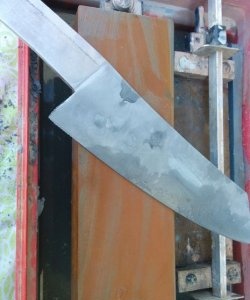

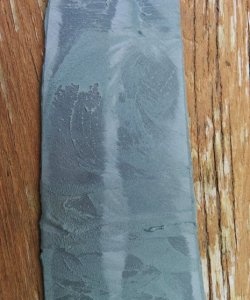

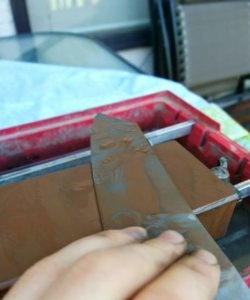
Watch the video:
A polished blade will not only look better, but it will also be more protected from corrosion.The smoother the surface, the less likely it is that water will remain in the grooves and cause stains. I used three types of stones to polish the blade. I started working with a coarse stone (with P300-P400 grit), moving on to a finer one (P800) and finished polishing with the finest one, with P1200 abrasive grit. The result of this work will be a shiny blade, but without a mirror sheen.
If you want to bring the result to a mirror-like surface, or you do not have sharpening stones, then you can use sandpaper or wet sandpaper for this work.
The process is known - just rub the blade on a stone or rub sandpaper on the blade. We do this until the surface becomes uniform, then reduce the size of the abrasive grain. When working with the whetstone, move from one side to the other so as not to leave them wet for a long time. If you can use a sharpening stone that can be treated with oil, I recommend using one to avoid staining the blade. This stage will take quite a lot of time, but no more than the formation of the blade profile.
Drilling holes for rivets
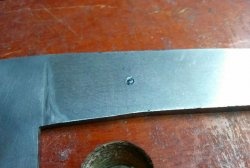
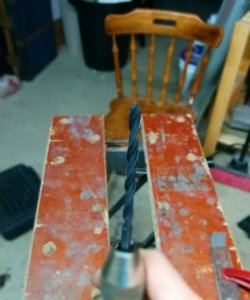
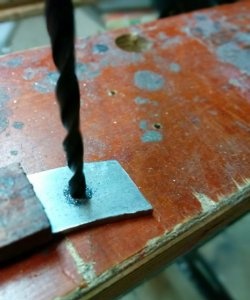
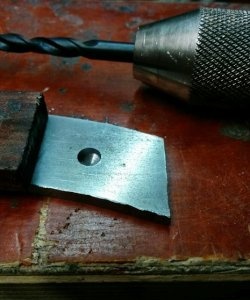
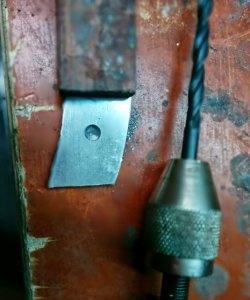
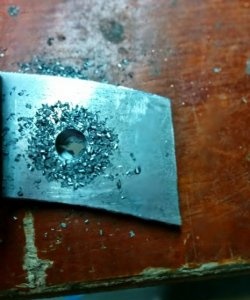

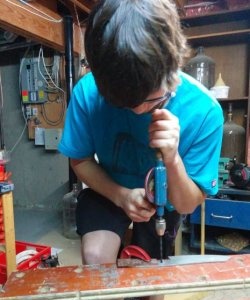
To fix the pads on the knife handle, you need to drill two holes for rivets in the shank. This is important to do before heat treatment. I recommend doing a test assembly to ensure that the edges of the raw pads extend beyond the edges of the tang. In order for the drill to quickly cut into the metal when drilling, the drilling location must be marked with a center punch. Then select a drill of the required diameter and drill two holes in the shank. If you use a hand drill, then the risk of breaking the drill will be reduced. For example, I broke two using an electric drill.Plus, drilling with a hand drill takes slightly longer than working with an electric one.
Making a forge

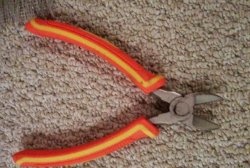
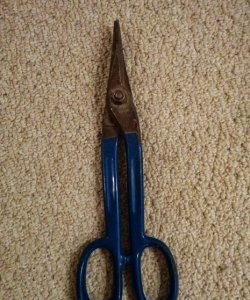
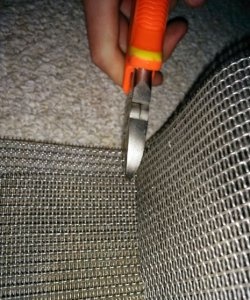
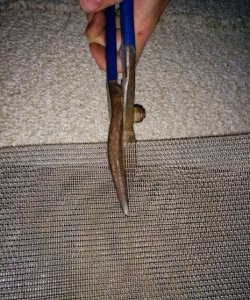
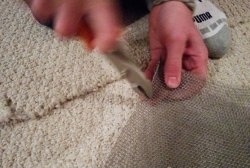
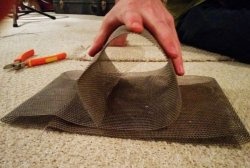
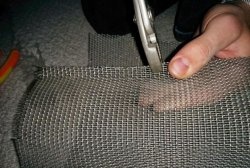
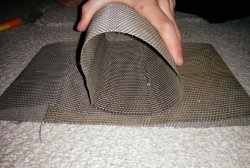
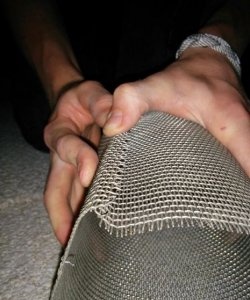


To heat treat a knife, you will have to heat the metal to the required temperature at which the internal structure of the metal undergoes changes. This occurs at about 750 C. I have seen some people use an oxy-acetylene torch, but I have not tried this method myself.
Therefore, if you are going to do the heat treatment yourself, you will need a forge. I think most people would rather make their own than buy one. Information on how to make a forge can be found on the Internet. For this you will need sand and plaster. To check the temperature, you can heat up some kitchen salt. If it melts, then this temperature will be sufficient to harden the metal. But if you are using a steel grade that is more complex in terms of heat treatment, you can turn to third-party companies for this.
Heat treatment of knife blade


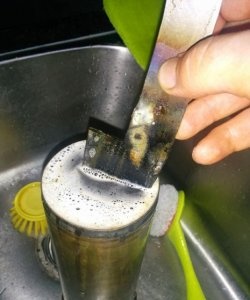

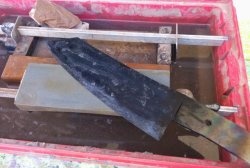

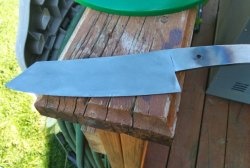
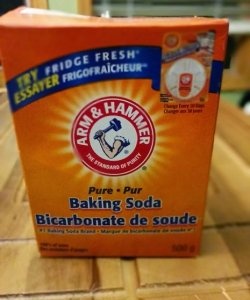
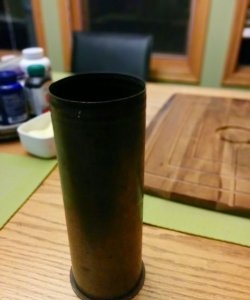
Heat treatment is the process that reveals the real qualities of a knife. Up to this point, the metal was quite soft and “pliable” for processing. After hardening, the blade will be more difficult to work with, so check again if everything suits you.
Heat treatment has two stages: first the steel is made harder, then it is slightly weakened. The second process is called vacationing. It will allow the metal to be more resistant to wear (less brittle).
The temperature to which steel must be heated for hardening depends on the grade of steel. Typically, the temperature to which carbon steel must be brought is lower than that of stainless steel.
Regardless of which forge you decide to use, it's time to start the process. It is best when the flame moves towards the exit in a spiral, so the metal heats up more evenly. At this stage, gloves will not be superfluous, since you will be in close proximity to the source of such a high temperature. Change the position of the blade periodically to ensure it heats evenly. The steel will begin to change color. When it turns bright red, hold a magnet near it. If the metal is magnetic, it means the blade is not heated enough. If not, then the temperature is just right.
Most tool steels use oil as the coolant. Used engine oil works well, however, when you lower a hot knife into it, flames will come out of it. If you don't want to deal with petroleum products, you can use canola or olive oil. However, regardless of the method you choose, be prepared and keep a fire extinguisher or a box of baking soda nearby. Never try to put out an oil fire with water. The amount of oil should be sufficient so that the metal can be completely immersed in it. However, when making a kitchen knife, it is not necessary to harden the shank. The container must not be made of flammable materials. No plastic or wood. I used an old artillery shell.
When you put the blade into the oil, move it back and forth as if you were going to cut something. Do not move it from side to side, as this may cause the blade to bend. After two minutes, the knife can be removed. Be careful as the knife is very fragile at this stage and may crack if dropped slightly. Wash the blade in soapy water to remove any remaining oil.Black scales may form on the surface; this is normal. After hardening the blade, try lightly filing it; it should slip and leave only small scratches. If it cuts into the metal well, then you need to repeat the hardening process again.
Now it's time to release the blade. This process reduces its hardness but improves the flexibility of the blade. The ratio of hardness and flexibility can be adjusted by temperature and tempering time. Most steel manufacturers have metal heat treatment tables. Hardness level can be measured using the Rockwell scale. For a kitchen knife, this indicator should be at the level of 60-64 kgf.
Tempering my blade from HVG steel took two hours.
After tempering, the blade is finally polished. Everything is done quite quickly, only a very thin top layer is removed using a stone or sandpaper.
Sharpening quality knife sharpening

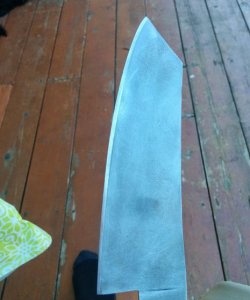
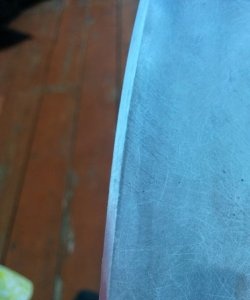

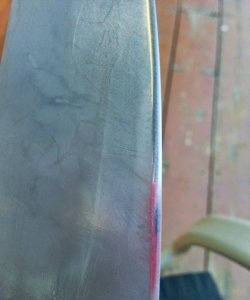
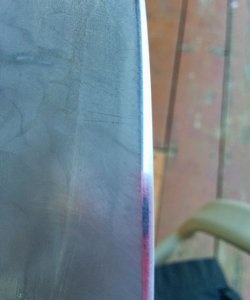
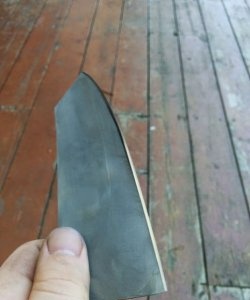

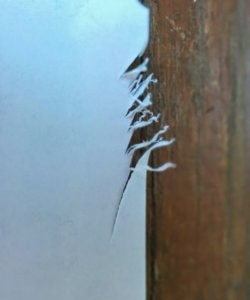
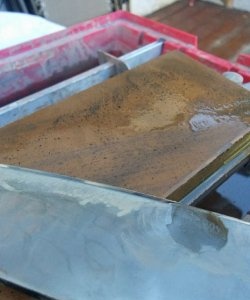
Watch the video:
Sharpening is an art that needs to be learned hard. Although certain systems for this process have already been developed. One way is to secure the file in a special holder. I do not recommend using sharpening tools in which the sharpening angle of the cutting edge cannot be changed. Most likely, it will not fit our option.
I sharpened my knife in a very traditional way. He moved the blade along the whetstone without changing the angle of the blade. This is not as difficult as it may seem because you choose the sharpening angle and you will know how to hold the blade. The smaller the angle, the sharper the knife will be, and the more fragile its cutting edge will be. When you hear a hissing sound during operation, turn the blade over and work on the other side. Just this time make less movements.Continue switching sides and decreasing the number of strokes (to three on each side). After this, we switch to a stone with a smaller abrasive grain. I finish sharpening my knives on a P8000 grit stone.
I would recommend sharpening the knife (at least partially) before you glue on the handle pads. Small particles that are formed as a result of working on whetstone can eat into wooden overlays, changing their color.
Making the handle, finishing touches
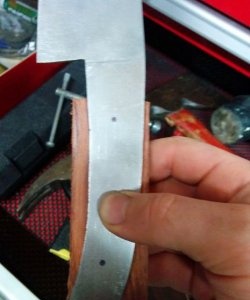
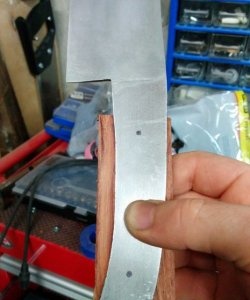

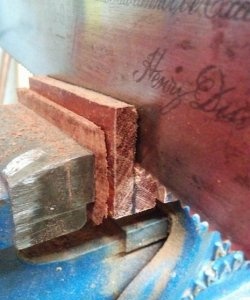

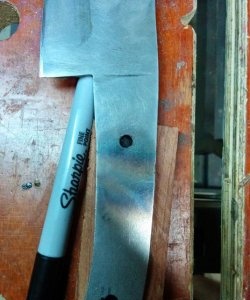
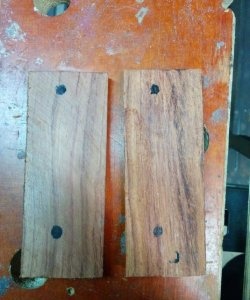
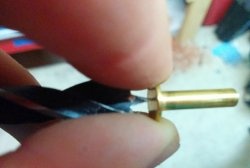
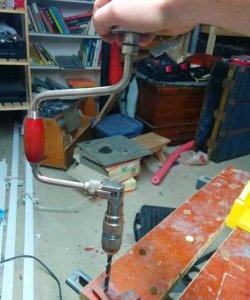
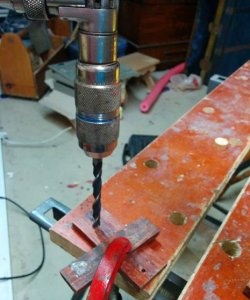
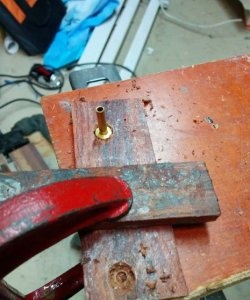
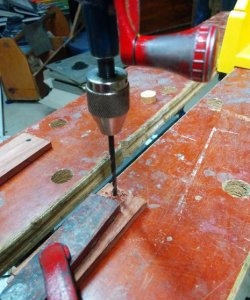
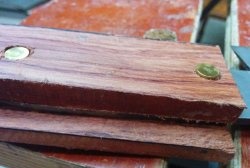
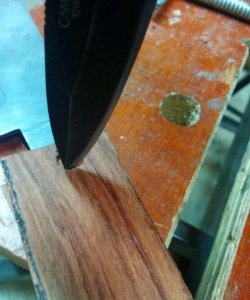

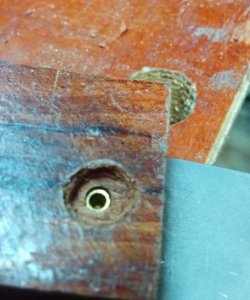
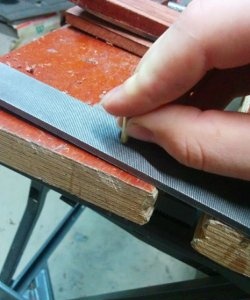
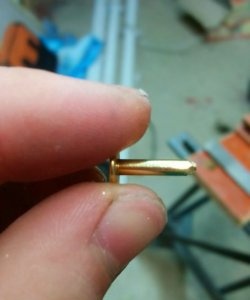

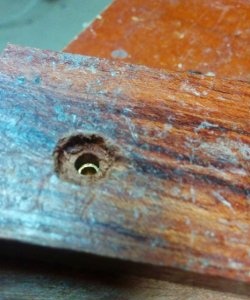


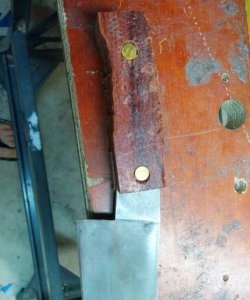


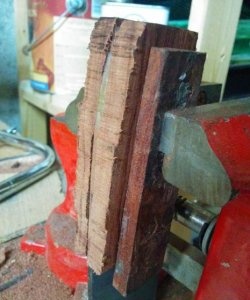
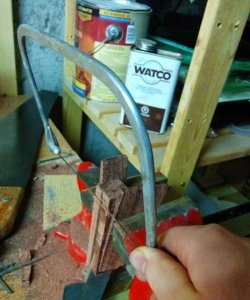
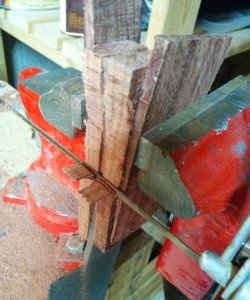

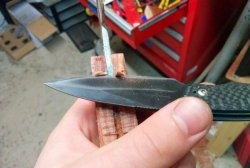
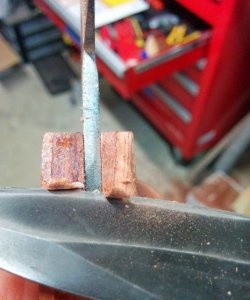
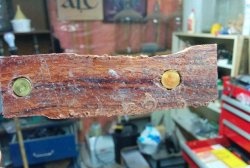
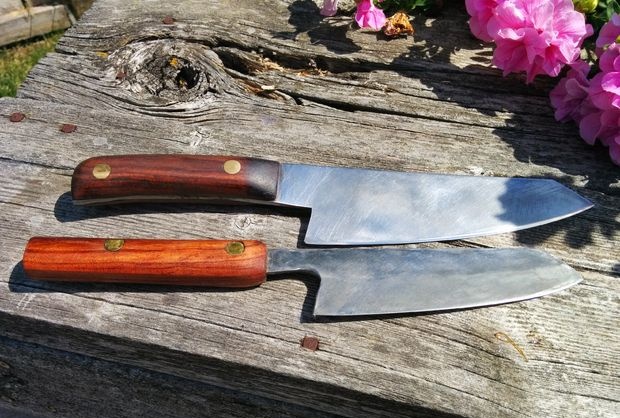
Depending on the style of knife you choose, you may want to hide the tang in the handle, or, more commonly, have pads over it. The handle of my knife is made using the second method, when the wooden plates are sanded together with the shank and fastened with rivets.
Start by cutting wood, preferably hardwood. It is best when the tree has a coarser texture of growth rings, and the thickness of one overlay is from 5 to 10 mm. Depending on the dimensions of your knife, you can change their thickness. Once you have decided on the dimensions, use a miter box to cut out the pads to the same thickness. In relation to other measurements, accuracy is not needed at this stage, the main thing is that the pads protrude beyond the shank.
Once the trims are cut, line them up on the shank and make marks where you want the rivets to go. Then drill out these holes. Start with a drill bit as thick as the diameter of the rivet head. The hole needs to be made a little deeper than the height of the head. The rest of the hole must be made with a drill with a diameter slightly smaller than the thickness of the rivet. This way the pads will be more securely attached.
Now it's time to insert the rivets into the handle and attach the pads (which still look more like bars) to the shank.Using a vice, press the rivets into each other until they are flush with the wood (this will take less time to grind them down). Next, clamp the nail in a vice with the head facing up. Place the handle of the knife so that the rivet is on the head of the nail. On the opposite side, place another nail head down on the rivet in a similar manner. Hit the top nail, thereby driving the rivets into the handle deeper into the depth of the wider hole.
After this, use a jigsaw to saw off the excess pads. Then, for more precise work, you can give the wood the desired shape using a sharp knife. Its blade copes with this task quite accurately, then you just need to rub everything with sandpaper.
Usually I make the back of the handle thicker, and the front parts of the lining smoothly descend to the blade. Then you can immediately apply a clear varnish to the handle, or sand it with P220 sandpaper.
When the wood is smooth enough and the handle is comfortable to hold, you can apply a stain or varnish, depending on the type of wood you are using. If you like the look of wood grain, then apply a varnish to help protect the handle from moisture and chips. When the wood is smooth enough, you can use the remaining pieces of wood to experiment with the choice of stain. After the stain coat, apply clear varnish.
Now your quality kitchen knife is ready

You've just saved a significant amount of money and can now enjoy using a high-quality knife that was made by you. Thank you for your attention!
Original article in English

